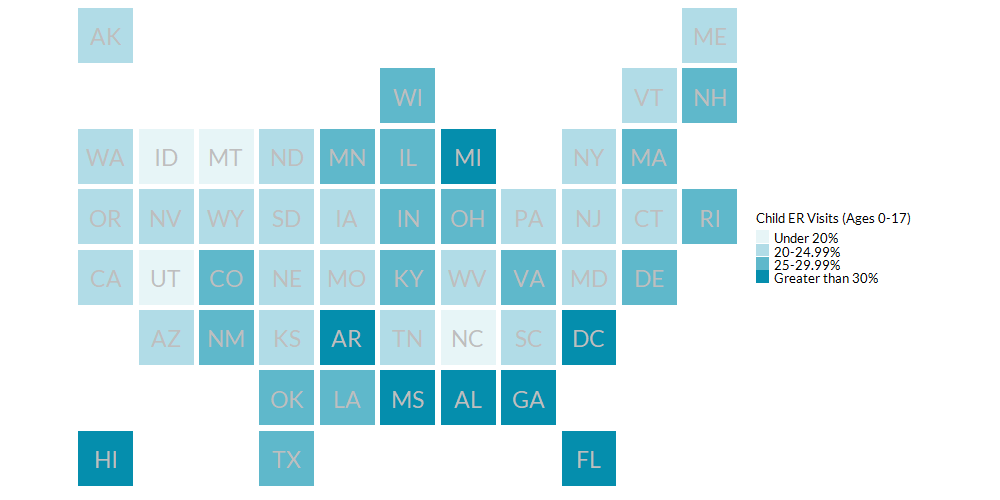
Indicator Data by State
ER Visits Data 2021
Frequent emergency room visits can indicate unmet health needs, barriers to accessing pediatric care, or unsafe living environments for children. Nationally, 25 percent of children under age 18 visited the emergency room between 2018 and 2019. In 2015, children under age 5 and from households with low incomes had disproportionate rates of emergency room visits. In 2018, unintentional injuries were a leading cause of death and disability among children aged 1–4. Not all families have equal access to health care and other services that support children’s health. Structural racism in the health care field can also drive differences in access to preventive care across racial and ethnic groups. The table below presents data disaggregated by race and ethnicity to help us identify inequities and work toward solutions that promote equity.
Home Visiting as Part of the Solution. Beyond helping families access health care services, home visitors also provide parents with knowledge and training to increase their awareness of potential safety hazards and make their homes safer for children. For example, educating parents about “baby proofing” their homes can reduce unintentional injuries.
Emergency Room Visits by State, 2018-2019

| State | All Groups | Asian | Black or African American | Hispanic | White | Another Group |
Notes: NA indicates that the total number of respondents to this measure (unweighted denominator) is less than 30, which does not meet Maternal and Child Health Bureau data display criteria. Counts associated with specific racial groups (e.g., White) are exclusive and do not include Hispanic.
Definition: Emergency room visits refers to the percentage of children aged 0–5 who visited the emergency room 1 or more times for any reason in the past 12 months. The full population sample, pooled from 2018–2019 data, includes non-institutionalized children in the United States aged 0–17, and is weighted to be representative of that subgroup of the U.S. population.
Source: Child and Adolescent Health Measurement Initiative. 2018–2019 National Survey of Children’s Health (NSCH) data query. Data Resource Center for Child and Adolescent Health supported by Cooperative Agreement U59MC27866 from the U.S. Department of Health and Human Services, Health Resources and Services Administration’s Maternal and Child Health Bureau (HRSA MCHB). www.childhealthdata.org